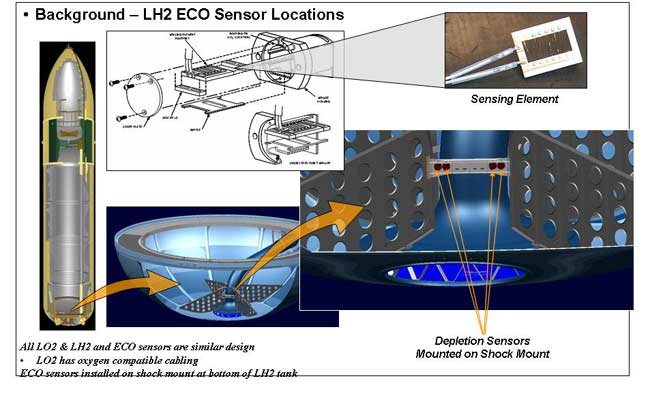Discovery's Launch Date Shifts as Engineers Investigate Sensor Glitch

CAPECANAVERAL, Fla. - NASA's plans to launch the space shuttle Discovery arestretching further into July as engineers struggle to understand a fuel sensoranomaly that scrubbed an attempted space shot Wednesday.
If theproblem is something as simple as a case of loose wiring, NASA could launchDiscovery - its first orbiter to fly since the 2003 Columbia tragedy - at about2:14:21 p.m. EDT (1814:21 GMT) on Sunday, July 17, but the chance of that isremote at best, NASA officials said here Thursday.
"If we wereto get extremely lucky, it is theoretically possible we could still launch onSunday," said Wayne Hale, deputy manager of NASA's shuttle program, during apress briefing here at Kennedy Space Center (KSC). "This represents a reallyoptimistic, good luck scenario which I think is not very credible."
Shuttleengineers are more likely to spend several days troubleshooting Discovery'sexternal tank fuel sensor system in hopes of isolating the problem, Hale added.
In thatcase the launch could push into early next week, shuttle officials said. WhileDiscovery's STS-114 astronaut crew - which was strapping into the orbiter whentheir launch was scrubbed - will stay on at KSC for the time being, they willlikely return to NASA's Johnson Space Center if the liftoff date stretchesfurther out, they added. Discovery must launch by July 31 to make its currentlaunch window. The next opportunity to launch after that runs between Sept.9-24.
Discovery'smission management team expects to meet at 3:30 p.m. EDT (1030 GMT) Friday foran update on roubleshooting plans for Discovery. A press briefing is expectedpending that meeting, NASA officials said.
During July13 countdown for Discovery's STS-114 mission, launch controllers detected afailure in one of four engine cut-off (ECO) sensors in the liquid hydrogensection of the orbiter's external tank. In a countdown test designed to forcethe sensors to report an empty fuel tank, one sensor reported it full - or 'wet'. Since all four must perform perfectly in order to launch, flight controllerscalled off the launch attempt.
Breaking space news, the latest updates on rocket launches, skywatching events and more!
The sensorstrack the amount of liquid hydrogen propellant so the orbiter can shut down itsthree main engines before propellant runs out. A similar sensor suite performsthe same function for the external tank's liquid oxygen supply.
As padengineers emptied Discovery's fuel tank late Wednesday, the faulty fuel sensor continuedto report a full tank despite the absence of liquid hydrogen. In later tests,the sensor reported the proper, dry tank status.
In evenmore subsequent tests, engineers were able to get the sensor to again report a fullexternal tank before it settled into normal operations, Hale said.
"We nowhave an intermittent, transient kind of failure which is the worst kind ofthing to troubleshoot," Hale said.
Engineersare still unclear whether the fuel sensor glitch resides with the actual sensoritself, the wiring between it and Discovery or the sensor box inside theorbiter that processes the fuel readings. The box does contain transistors thatengineers have found faulty in the past, but the malfunction seen Wednesday isnot indicative of a transistor failure, shuttle managers said.
"Theindications are not consistent with what a transistor failure would indicate,"Hale said. "That's part of the trouble here...if we really thought that was thesmoking gun, I think we'd have something to go after."
For now,all troubleshooting plans assume that fixes to Discovery's ECO sensor systemcan be made at the pad, with mission managers hoping they will not have to rollthe shuttle launch stack back to the 52-story Vehicle Assembly Building for work or send engineers inside the fume-filled liquid hydrogen tank.
"We wouldlike to not go into the liquid hydrogen tank," Hale said, adding that specialprecautions and care must be taken to ensure engineers safe access. "It becomesan operation you'd just as soon not do."
Shuttleofficials and engineers hope to determine a specific troubleshooting plan for Discoverytonight and decide whether to begin unloading the orbiter's cryogenic fuel cellreactants to allow pad workers safe access to its aft section where the sensorbox resides.
"At thispoint we are following the normal 72-hour scrub turnaround process," MichaelWetmore, NASA's director of space shuttle processing at KSC, told reporters inthe briefing.
But NASAcannot keep its launch team on alert indefinitely, and if the mission is notexpected to launch by early next week, the team will shift away from acountdown hold status and into full troubleshooting mode.
"Early nextweek is the break point at which we need to get out of the countdown procedure andget everybody some crew rest," Wetmore said.
- Fixing NASA: Complete Coverage of Space Shuttle Return to Flight

Tariq is the award-winning Editor-in-Chief of Space.com and joined the team in 2001. He covers human spaceflight, as well as skywatching and entertainment. He became Space.com's Editor-in-Chief in 2019. Before joining Space.com, Tariq was a staff reporter for The Los Angeles Times covering education and city beats in La Habra, Fullerton and Huntington Beach. He's a recipient of the 2022 Harry Kolcum Award for excellence in space reporting and the 2025 Space Pioneer Award from the National Space Society. He is an Eagle Scout and Space Camp alum with journalism degrees from the USC and NYU. You can find Tariq at Space.com and as the co-host to the This Week In Space podcast on the TWiT network. To see his latest project, you can follow Tariq on Twitter @tariqjmalik.
